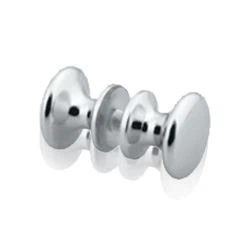Hey there, fellow car enthusiasts and auto repair pros! I'm an auto parts supplier, and I know how crucial it is to keep your vehicles in top - notch condition. One of the key components in a car's ignition system is the ignition coil. Today, I'm gonna walk you through how to test a car's ignition coil.
First off, let's understand what an ignition coil does. In simple terms, it takes the low - voltage power from your car's battery and transforms it into the high - voltage power needed to create a spark in the spark plugs. Without a properly functioning ignition coil, your engine might misfire, have trouble starting, or even stall.
Tools You'll Need
Before you start testing, you'll need a few tools. You'll need a multimeter, which is a handy device that can measure voltage, resistance, and continuity. You'll also need a spark tester. Some people also use a test light, but I find a spark tester to be more reliable. And of course, basic hand tools like wrenches and screwdrivers to access the ignition coil.
Safety First
Testing an ignition coil involves working with high - voltage electricity, so safety is super important. Make sure your car's engine is off before you start. Wear safety glasses to protect your eyes from any debris. And always disconnect the battery's negative terminal to avoid any electrical shocks.


Step 1: Locate the Ignition Coil
The ignition coil is usually located near the engine. In some cars, it's a single coil that distributes the high - voltage current to all the spark plugs through a distributor. In newer cars, there might be multiple ignition coils, with one coil for each spark plug. Look for a cylindrical or rectangular - shaped component with electrical wires connected to it.
Step 2: Check the Visual Condition
Before you start using any testing tools, take a good look at the ignition coil. Check for any signs of damage, like cracks, burns, or corrosion. If you see any of these issues, the coil might be bad and need to be replaced. Also, make sure all the electrical connections are tight. Loose connections can cause problems with the coil's performance.
Step 3: Test the Primary Circuit
The primary circuit of the ignition coil is the low - voltage side. To test it, you'll use your multimeter. Set the multimeter to measure resistance (ohms).
- Disconnect the electrical connectors from the ignition coil.
- Touch the multimeter probes to the primary terminals of the ignition coil. The primary terminals are usually the smaller ones.
- The resistance reading should be within the manufacturer's specifications. This info can usually be found in your car's repair manual. If the reading is way off, it could mean there's a problem with the primary winding of the coil.
Step 4: Test the Secondary Circuit
The secondary circuit is the high - voltage side of the ignition coil. Testing this is a bit more involved.
- First, remove the ignition coil from the engine.
- Set your multimeter to the highest resistance setting.
- Connect one probe to the center terminal of the ignition coil (the one that connects to the spark plug wire) and the other probe to the outer terminal.
- Again, compare the resistance reading to the manufacturer's specs. A reading that's too high or too low indicates a problem with the secondary winding.
Step 5: Use a Spark Tester
If the resistance tests seem okay, but you're still not sure if the coil is working, you can use a spark tester.
- Connect the spark tester to the ignition coil's output terminal (where the spark plug wire goes).
- Ground the spark tester to the engine block.
- Have someone crank the engine. If the ignition coil is working properly, you should see a strong, blue spark in the spark tester. If there's no spark or a weak spark, the coil might be faulty.
When to Replace the Ignition Coil
If you've followed all these steps and found that the ignition coil is not working correctly, it's time to replace it. And that's where I come in! As an auto parts supplier, I've got a wide range of high - quality ignition coils for different makes and models of cars.
We also offer other great auto parts. For example, if you're into precision manufacturing, check out our CNC Lathe Components. These parts are made with high - precision machining techniques, ensuring a perfect fit for your vehicle. And if you're looking for parts made through a more advanced casting process, our Investment Casting Parts are a great choice.
If you're in the market for an ignition coil or any other auto parts, don't hesitate to reach out. We're here to help you keep your cars running smoothly. Whether you're a professional mechanic or a DIY enthusiast, we've got the parts you need at competitive prices. Contact us to start a purchase negotiation, and let's get your vehicle back on the road in no time.
References
- Haynes Repair Manuals
- Chilton's Auto Repair Guides
So, there you have it, folks! Testing a car's ignition coil isn't too difficult if you follow these steps. And remember, if you need any auto parts, I'm just a message away.



